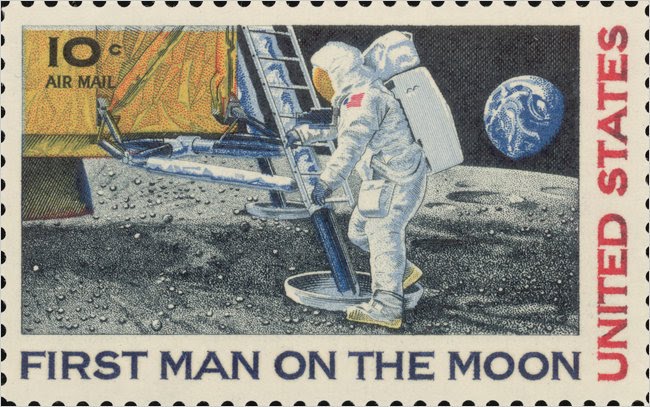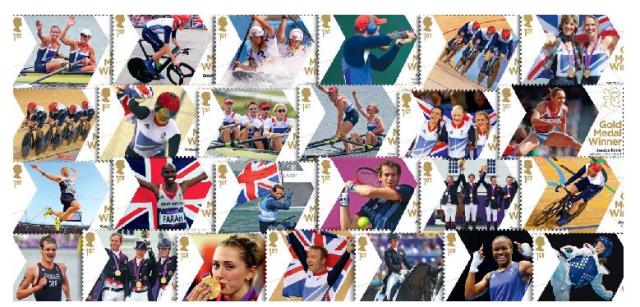Posts Tagged ‘The Westminster Collection’
Letter from the Moon – how Neil Armstrong posted a letter from the Moon
It was with great sadness that the world heard that one of its heroes had passed away on 25th August.
Of course, we all know the story of how Neil Armstrong landed on the moon but so many of us know about how he sent the first ever “moon letter” and started a new collecting craze in the USA.
Shrouded in Secrecy
Under great secrecy in case the mission went wrong, the US Postal Service prepared a 10 cent Stamp to celebrate the United States winning the race to the moon.
However, what made this stamp unique was the fact that Armstrong and his co-astronaut ”Buzz” Aldrin took with them on their historic journey not just the die that would make the stamp’s printing plates but also a special ‘Moon letter’ bearing a die proof of the stamp itself. The plan was that the letter would be personally postmarked by Armstrong and Aldrin while they were on the Moon.
The stamp itself had been designed by Paul Calle, a well-known and respected designer from Connecticut. “It quickly became obvious that the first step on the Moon was the most dramatic moment and with that final sketch we knew we had our design!”
Calle’s main problem however, was envisaging what the moon would actually look like. The artist took a chance and showed the module’s tripod foot making a very faint imprint. Fortunately, that turned out to be exactly right.
In Violation of Federal Law
Although some collectors questioned whether the stamp violated federal law by using a living person’s picture, it was argued that though his features were completely hidden by a space suit, it could have been none other than Neil Armstrong.
On 20th July, the lunar module Eagle landed on the Moon. As the world watched on, Commander Armstrong sent the good news from 235,000 miles away: “Houston, Tranquility Base here. The Eagle has landed.”
Back home in Connecticut, Paul Calle recalls how he “sat glued to the television set.” “Fortunately, when Armstrong took that first step, it was perfect,” he said. “Just as I envisioned on the stamp.”
The First Ever “Moon Letter”
Aldrin later joined Armstrong on the Moon’s surface. As it turned out, the two astronauts didn’t have time to postmark the “Moon letter.” So the envelope and its die proof actually were given the “MOON LANDING/USA/JUL/20/1969” hand stamp during the return journey.
Nevertheless, the Moon letter had travelled more than a half-million miles, a lot lot further than any other piece of post had ever travelled. On their return home, the letter underwent a decontamination period at Houston, along with the astronauts themselves. All were quarantined for 18 days.
Decontaminated before production
The die was also processed for decontamination before it was sent to the Bureau of Engraving and Printing, where the process of preparing the plates for stamp production began promptly.
Because of its larger size – it was 50 percent larger than conventional U.S. commemoratives – the stamp was produced in sheets of 128 rather than 200 subjects. A total of 152,364,800 stamps were printed and distributed.
The stamp inspired great interest among first day cover collectors. Within three weeks after the 9th July initial announcement, there had been 500,000 requests for First Day Covers, which would bear not only the 9th September Washington, D.C., date stamp but also a replica of the July 20 “MOON LANDING USA” date stamp that the astronauts applied to their very own Moon letter.
Nearly 9 million First Day Covers
The final tally of first day covers was a phenomenal 8,743,070, a figure that nearly trebled the previous high of three million. In comparison, even the Elvis Presley commemorative stamp of 8th January 1993, one of the most popular stamps in history, received only 4,451,718 official Memphis, Tennessee, first day of issue postmarks.
Given the historical significance of this story, it is fitting that stamps and coins will be among the key tributes issued to commemorate the greatest of American Heroes.
New Paralympic stamps revealed by Royal Mail
 The Royal Mail has today announced plans to issue an extra set of stamps to mark the 2012 Paralympic Games.
The Royal Mail has today announced plans to issue an extra set of stamps to mark the 2012 Paralympic Games.
The set of four stamps will feature the Paralympic sports of wheelchair basketball, cycling, powerlifting and athletics alongside famous London landmarks such as St Paul’s Cathedral. They will go on sale on 29th August to coincide with the start of the games in London, Royal Mail confirmed today.
This new set is in addition to the stamps already announced by Royal Mail to mark each Paralympic gold medal. During London 2012, the Royal Mail issued a new stamp to mark each of the twenty-nine gold medals won by Team GB.
Similarly, the Royal Mail will also paint the post box gold in each home town of a gold medal winning Paralympian, just as it did for London 2012.
“We hope these stamps will help get the nation excited about the Paralympic Games and encourage the public to support Paralympics GB when it’s our turn to compete against the best in the world,” says Tim Hollingsworth, Chief Executive of the British Paralympic Association.
The Paralympics have grown significantly since the first games in Rome in 1960 when just 400 athletes from 23 countries participated in wheelchair sports only. This year, London will play host to over 4,200 Paralympians from around 150 countries who will take part in a total of 20 sports. These range from popular disciplines such as athletics, sailing and rowing to the less well-known boccia and goalball.
As the athletes start to arrive in the Capital to complete their preparation, the Paralympic torch began its week-long journey on Wednesday 22nd August. This will culminate in a 24-hour relay from Stoke Mandeville, the birthplace of the Paralympic movement, to the Olympic Stadium, the site of the Opening Ceremony.
At the Paralympics in Beijing in 2008, the British team won 42 gold medals. The games run until 9th September.
Coin Collecting – a fascinating and rewarding hobby PART III – Collecting Made Easy
Look at the change in your purse or pocket and you’ll see some coins are bright and new looking, while others look worn and battered. For collectors, the condition of a coin is very important – the difference in price between a “Fine” condition coin and an “Uncirculated” condition coin can be huge. The grading system used in the UK is:
- Poor – considerably worn, of little value to the collector unless of very rare type or date
- Fair – Worn but with dates and legends still visible
- Fine (F) – Considerably worn on raised surfaces, caused by circulation or faulty striking in older coins
- Very Fine (VF) – some limited circulation wear
- Extremely Fine (EF) – very little circulation or wear, only visible on close examination
- Uncirculated (UNC) – in new condition fresh from the mint, probably not absolutely perfect because of mass production and handling methods
- Brilliant Uncirculated (FDC) – absolutely flawless, produced and handled apart from the main coin production line – sometimes known as “Fleur-de-Coin”
- “Proof” coins are produced in limited quantities – called an “Edition Limit” in a separate process from that used to produce circulation coins. They are struck several times with special highly polished dies and usually have a mirror lustre back ground, with frosted relief.
These aren’t hard and fast rules and even experts might disagree on differences but as you build your knowledge and examine more coins, you’ll learn to recognise and assess coin quality. It’s a good idea to get a good magnifying glass to examine your coins for signs of wear and damage and assess their condition.
Displaying and protecting your coin collection
As you add to your coin collection, it’s likely to grow in value so you will want to protect it. Normally your collection should be covered by your household insurance, but if you have high value coins, especially gold coins, these will have soared in value so you should notify your insurers. They might advise you to keep them in a bank but you may want to protect your coins at home where you can enjoy them. Avoid keeping coins jumbled together, as they will become scratched. The Westminster Collection usually supplies coins in some form of protective capsule, sleeve or presentation case, depending on their value.
Albums with protective transparent sleeves, including individual coin envelopes, are a low-cost starting point, protecting your coins while allowing you to examine them. You can later progress to plastic or wooden display cases. When storing copper or bronze coins it’s important to keep them in a dry atmosphere, since damp may turn them green. In fact, avoid cleaning if possible, since even minute abrasion can affect values. Dirty gold and silver can be gently washed in soap and water. Avoid handling coins, but if you need to, handle them by the edges.
Useful coin collecting terms
- Obverse – the side of the coin with the monarch’s head – hence “Heads”
- Reverse – the other side, “Tails”, usually bearing an emblem or other design
- Type – the main design on a coin
- Field – the part of a coin between the Type and Legend or edge
- Legend – the words around the edge of a coin, often the monarch’s name and a motto or title
- Exergue – the section of a coin containing the date, usually on the reverse below the main design
- Die – the block of hardened metal with a design or effigy engraved on it, used to impress the design onto a coin blank
- Hammered Coin – the earliest method of striking a coin, by placing a coin blank between two dies and hammering the top die. Used in Britain up to 1662
- Milled Coin – a machine made coin struck in a coining press. First used in 1560, hand powered, steam powered from c.1800, electrically powered from 1895
- Mint – an organisation authorised to strike coins and medals. The British Royal Mint is one of the oldest and most respected in the world dating back to the 7th century
- Condition – the state of wear on a coin, graded inBritain from “Poor” or very worn, to “Uncirculated”, or fresh from the mint
- Proof – not a coin grade or condition but a type of coin, struck using polished dies in a separate minting process, to produce an immaculate coin






